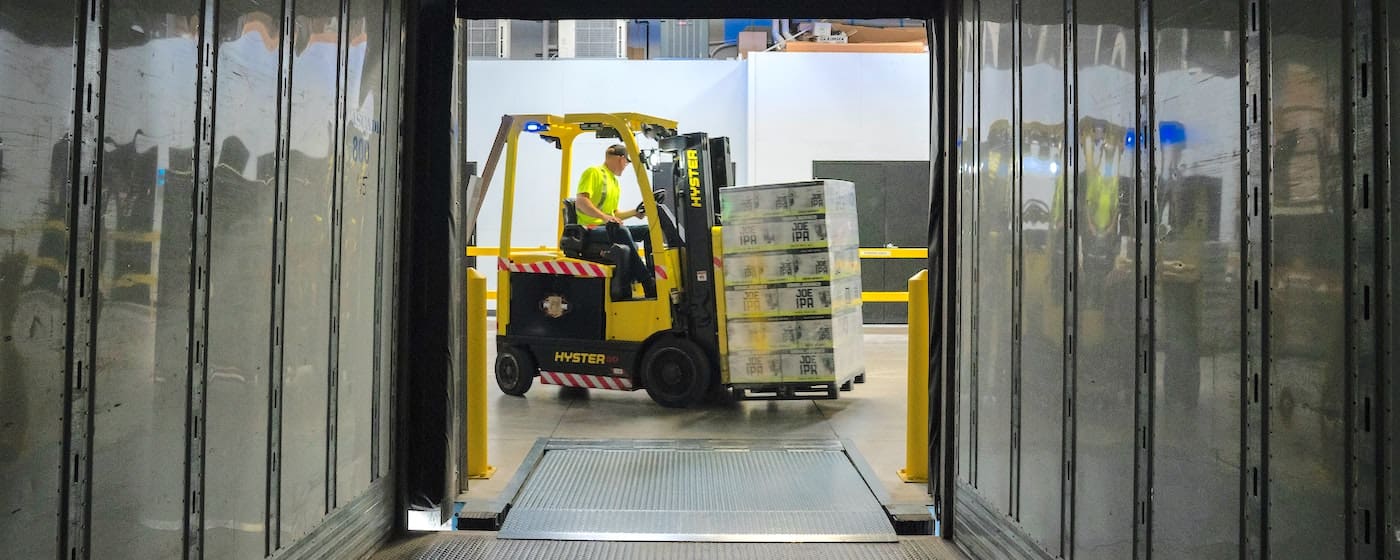Table of Contents
** Minutes
What is a milk run in logistics?
How milk runs are applied in modern logistics
Are milk run logistics right for you?
As an ecommerce business owner or operator, you’re likely on the lookout for new ways to optimize your logistics – and ultimately ways to streamline your operations. You may invest in new infrastructure and workforce or even explore a variety of logistics processes and approaches to find one that works best for you.
As such, you may have come across the term “milk run” logistics. Scratching your head trying to figure out the meaning of this phrase and if it’s a good choice for your business?
To help you make an informed decision, we’ll explore what milk run in logistics means, how it’s applied in modern logistics, and the pros and cons.
What is a milk run in logistics?
In logistics, milk run is a delivery approach that involves using one vehicle to pick up goods from various suppliers and transporting them in a single shipment to one customer.
That way, the suppliers won’t have to send out goods going to the same customer in multiple shipments. Instead, the vehicle makes multiple stops at different facilities where goods are loaded and/or unloaded as needed.
Alternatively, in a manufacturing facility, you may have one vehicle that transports parts and supplies from one central location to multiple assembly areas.
Why is it called a milk run?
The term comes from the dairy industry practice in which one tanker collects milk from different dairy farms and delivers it to a single milk processing firm. The “milk run” is made on a daily basis to ensure that the milk supply remains fresh, and that overstocking can be prevented.
Similarly, milk run logistics is based on the principle that materials consumed are quickly replenished.
How milk runs are applied in modern logistics
In modern logistics, the milk run method has been adapted and incorporated into a number of supply chain processes. For example, different components may be shipped from several raw materials suppliers to the same manufacturing company. Or in case of internal warehousing operations, you may have one central area in your warehouse from where you send different product components to several assembly areas.
With advancements in technology and equipment, companies have been able to effectively implement milk run logistics to streamline their supply chains. For example, bulk liquid tanks, refrigerated vans, and ventilated dry vans allow suppliers to transport the goods safely even as they make multiple stops. This allows for the safe transportation of items that are at risk of spoilage, damage, or spillage.
In addition, RFID technology and warehouse management systems give businesses the visibility needed to track their inventory movement and locations. This way you can keep a close eye on how many units you have in stock and how many are in transit, and immediately notify you when replenishments are needed. That way, you get to quickly identify which items need to be included in the next batch of deliveries.
Are milk run logistics right for you?
To make an informed decision about whether you should use milk run logistics, let’s weigh the pros and cons.
Advantages of milk run logistics
- Deliveries are made on a frequent and regular basis, which reduces the risk of stockouts and ensures that stock is constantly replenished. As a result, companies can build a more predictable and reliable supply chain with the help of milk run logistics.
- Since the number of journeys are reduced with this approach, it also results in reduced carbon emissions. This is one of the most sustainable logistics models, offering some environmental and economic benefits.
- When deliveries are more regular and predictable, it becomes easier to track and control the quality of materials. As a result, companies can also improve their production quality and ensure fewer defect rates.
Disadvantages of milk run logistics
- In milk run logistics, the routes, pickup points, and delivery locations must be seamlessly synchronized. As a result, milk run can be very complex to implement as you need to consider multiple factors such as transport volumes, delivery time, and transit time to ensure high levels of accuracy.
- Owing to the above, even small mistakes could cause significant harm to your supply chain. Inaccurate forecasting or unexpected disruptions can lead to supply chain inefficiencies that could even snowball into larger issues.
- Since milk run logistics require significant planning, it can be a costly transition. Not to mention the cost of equipment and technology that may be needed to replace existing systems. For example, you may need to replace your forklifts with tugger trains or incorporate new RFID technology if you’re not already using it in your warehouses.
How ShipBob can help with your logistics and fulfillment
Although milk run can help you build a more predictable and sustainable supply chain, the process of implementing it is still complicated – especially when considering the need for accurate planning and synchronization to make it work. As such, you need to invest in technology that will bring better visibility into your supply chain to allow for better collaboration and synchronicity.
Tools such as the ShipBob inventory management software can provide you with the solution you need. The platform gives you complete visibility into your inventory at different stages of your supply chain. So, you know how much is in stock, which SKUs are running low, and when you need to place reorders.
ShipBob’s inventory management software integrates with your ecommerce platform, which makes it easier to track ecommerce orders as they move across the supply chain. You’ll be able to view the status of orders as they move from processing to shipping, so you can better manage your warehouse logistics and plan for replenishment accordingly.
While fulfillment can be tricky and costly even with milk run logistics, ShipBob simplifies it for you with world-leading fulfillment solutions. You can store your inventory strategically using ShipBob’s fulfillment network and get them closer to your customers for faster deliveries.
In terms of shipping rates, you get access to discounted rates that are pre-negotiated for you so you can keep your delivery costs low. Not only that, but you can also enjoy better shipping rates as the software lets you compare carrier rates for each order. That way, you can find the option that works best for each order and provide your customers with affordable and fast deliveries.
Moreover, ShipBob’s partnership with leading delivery management services ensures that you can optimize your delivery management process. This will bring better visibility and transparency into your delivery process so you can improve your planning and organize your management efforts.
Milk run logistics FAQs
Here are answers to the top questions about milk run logistics.
Does ShipBob use milk runs for logistics?
ShipBob is a fulfillment company, but we partner with many last-mile carriers–from global and national carriers to regional ones–to deliver goods to the end consumers.
How can I apply the milk run method to my fulfillment process?
There are a number of ways to apply the milk run method in your fulfillment process. For example, you can generate picking lists and assign them to pickers, who will bring products from multiple locations into one central location, typically the packing area.
What is the role of milk run in lean manufacturing?
Milk run is a common approach in lean manufacturing, with materials and supplies delivered frequently to different assembly areas in your facility. This keeps the production process flowing while helping to reduce overstocking and minimizing the need for manual orders for more materials.



